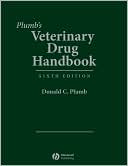Category Books
- Fiction Books & Literature
- Graphic Novels
- Horror
- Mystery & Crime
- Poetry
- Romance Books
- Science Fiction & Fantasy
- Thrillers
- Westerns
- Ages 0-2
- Ages 3-5
- Ages 6-8
- Ages 9-12
- Teens
- Children's Books
- African Americans
- Antiques & Collectibles
- Art, Architecture & Photography
- Bibles & Bible Studies
- Biography
- Business Books
- Christianity
- Computer Books & Technology Books
- Cookbooks, Food & Wine
- Crafts & Hobbies Books
- Education & Teaching
- Engineering
- Entertainment
- Foreign Languages
- Game Books
- Gay & Lesbian
- Health Books, Diet & Fitness Books
- History
- Home & Garden
- Humor Books
- Judaism & Judaica
- Law
- Medical Books
- New Age & Spirituality
- Nonfiction
- Parenting & Family
- Pets
- Philosophy
- Political Books & Current Events Books
- Psychology & Psychotherapy
- Reference
- Religion Books
- Science & Nature
- Self Improvement
- Sex & Relationships
- Social Sciences
- Sports & Adventure
- Study Guides & Test Prep
- Travel
- True Crime
- Weddings
- Women's Studies
Plumb's Veterinary Drug Handbook: Desk Edition » (6th Edition)

Authors: Donald C. Plumb Pharm.D.
ISBN-13: 9780813810973, ISBN-10: 0813810973
Format: Paperback
Publisher: Wiley, John & Sons, Incorporated
Date Published: May 2008
Edition: 6th Edition
Author Biography: Donald C. Plumb Pharm.D.
Donald Plumb was formerly Director of Pharmacy Services and Hospital Director at the University of Minnesota’s Veterinary Medical Center. Now retired from the University of Minnesota, he focuses full-time on providing veterinary drug information to veterinarians, other health professionals, and animal caretakers.
Book Synopsis
The Sixth Edition of this bestselling handbook includes over 70 new drug monographs, as well as updated dosages and information for older monographs. A separate section on topical medications has been added, and sections on ophthalmic drugs and small animal therapeutic diets have been updated. Completely new to the Sixth Edition is a two-color format and new monograph layout, which enables faster access to much-needed information. The Sixth Edition features new overdose information from the ASPCA® Animal Poison Control Center on 50 of the drugs most commonly associated with animal overdoses, and a new appendix on overdose decontamination.
Plumb’s Veterinary Drug Handbook is available in an 8 ½ x 11-inch desk size for enhanced readability and ease of use, as well as the convenient pocket size and electronic formats. Plumb’s one-volume coverage of drugs approved for veterinary species and non-approved (human) drugs that are used in veterinary practices today make this book an essential reference for veterinarians, veterinary technicians, veterinary pharmacologists, pharmacists with veterinary patients, animal research or zoological facilities, and libraries that serve these groups.
Doody Review Services
Reviewer:Marcella D Ridgway, VMD, MS, DACVIM(University of Illinois College of Veterinary Medicine)
Description:This is a detailed formulary and handbook of medications used in treating domestic veterinary species. The sixth edition updates the 2005 publication with additional drug monographs, extended coverage to include dermatologic products, and new formatting which includes a pronunciation guide and prescriber highlights for each monograph.
Purpose:The purpose is to provide a single-volume reference for veterinary medications, including mechanisms of action, pharmacology, indications for use, drug side effects and interactions, and published dose recommendations. The availability of concise yet thorough, easily accessed information about drugs currently used to treat veterinary patients is important to practicing veterinarians.
Audience:The handbook covers agents used in small, large, and exotic species and addresses the needs of graduate veterinarians in practice. It may also be useful to some advanced veterinary students engaged in clinical training but its multiple and often varying listings of drug dosages and frequency of administration make it necessary for the user to have significant previous training to make the appropriate choice of therapeutic regimens.
Features:The book consists principally of drug monographs presented in alphabetical order by the generic drug name; the index includes complete listings of drugs by generic and proprietary drug names and by therapeutic drug class or indication. Each individual drug monograph starts with a key to pronunciation of the drug name, the drug class, and a short list of prescriber highlights describing major points about the drug. Concise summaries of drug indications and use, pharmacology, pharmacokinetics, contraindications, adverse effects, toxicity, drug interactions, dosing (by species), monitoring, storage, and available human and veterinary dosage forms for that specific drug follow. Separate sections list ophthalmic and dermatologic products and provide tables summarizing nutritional characteristics of small animal therapeutic diets. A wealth of additional information, including chemotherapy protocols, parenteral fluid characteristics, conversion tables, abbreviations in prescription writing, laboratory reference ranges, relevant governmental agencies and health center contacts, veterinary pharmaceutical companies, and procedures for importing drugs into the U.S. for compassionate use appears at the end of the handbook, where it gets lost in the pages of reference and index listings, likely remaining unnoticed by many readers. Placement of this material at the front of the book would be a good idea.
Assessment:This continues to be an important addition to the veterinarian's library. The author's frequent updating with new editions is critical to address the expanding number of drugs in routine veterinary use.
Table of Contents
Systemic Monographs.
Index.
Subjects
 Veterinary Medicine
Veterinary Medicine  Veterinary Medicine - General & Miscellaneous
Veterinary Medicine - General & MiscellaneousNonfiction
 Medicine
Medicine  Veterinary Medicine
Veterinary Medicine
